
Ο Master Vithal και η Zubeida Begum Dhanrajgir στην ταινία Alam Ara (Το στολίδι του κόσμου). Via ajilbab, india-forums, nehamalude.
Με την ταινία του Alam Ara που προβλήθηκε στον κινηματογράφο Majestic της Βομβάης, ο Ardeshir Irani έγινε ο πρώτος ινδός σκηνοθέτης που γύρισε στη χώρα του μία ταινία με ήχο. Αργότερα, θα είναι πάλι ο πρώτος που θα γυρίσει μία έγχρωμη ταινία, εμφανισμένη εξ' όλοκλήρου στην Ινδία. Το 2003, μία πυρκαγιά που εκδηλώθηκε στο κτήριο του Εθνικού Κινηματογραφικού Αρχείου της Ινδίας κατέστρεψε πολύτιμα πρωτότυπα αρνητικά παλαιών ινδικών ταινιών, μεταξύ των οποίων και το αρνητικό της ταινίας Alam Ara.

Ο Master Vithal, o πρίγκιπας της ταινίας που ερωτεύεται μία νεαρή τσιγγάνα -την Zubeida. Βλ. Tamil Sangal.

Διαφημιστικό υλικό της ταινίας. Βλ. genuardis και medialabju.

Ο κινηματογράφος Majestic στο Νέο Δελχί, ελλείψει του Majestic της Βομβάης. Καρτ ποστάλ Delcampe.

Ο ινδός σκηνοθέτης Ardeshir Irani. Είχε 158 ταινίες στο ενεργητικό του ! Βλ. NBY, Picture Palace, thehindu.

Show Boat (1929), η αμερικανική ταινία που στάθηκε αφορμή για τον Ardeshir Irani για να γυρίσει πρώτος μία ταινία με ήχο. Βλ. salvadorsainz και fan.tcm.

Απόσπασμα συνέντευξης που έδωσε ο Ardeshir Irani σχετικά με την κατασκευή της ταινίας. Βλ. medialabju.

Βλ. medialabju.

Διαφήμιση του ηχητικού συστήματος που χρησιμοποιήθηκε για την ταινία. Βλ. A Heartful of Harvest.

Η Zubeida Begum Dhanrajgir. Η πρωταγωνίστρια της ταινίας του Ardeshir Irani ήταν κόρη του Nawab του Sachin και της Fatima Begum, μιας ντίβας της εποχής του ινδικού βωβού κινηματογράβου, που υπήρξε και η πρώτη ινδή σκηνοθέτιδα. Οι δύο αδελφές της Zubeida, η Sultana και η Shehzadi, έκαναν και αυτές καριέρα στον κινηματογράφο. Βλ. At The Edge και NBY.

Η Zubeida. Βλ. cineplot, riransatumblr, Wikimedia.

Σκηνές από την ταινία. Βλ. aawsat.daily, thehindu, outlookindia, indiaheritage.

Kisan Kanya (1937), η πρώτη ινδική έγγχρωμη ταινία, γυρισμένη κι αυτή από τον Ardeshir Irani.

Zubeidaa (2001), ταινία του Shyam Benegal που αναφέρεται στη ζωή της Zubeida. Το σενάριο έγραψε ο Khalid Mohammed, γιος της Zubeida.
Zubeidaa (part 4).
The Ghost Who Talked
Ardeshir's ardent dream, or the story of India's first talkie
Rauf Ahmed (βλ. Outlook. India.com).
List Of Silent Movies
1913 Raja Harish-chandra1917 Lanka Dahan1916 Keechaka Vadham1920 Shankuntala1921 Bhakt Vidur1921 Bilat Ferat1922 Pati Bhakti1925 Prem Sanyas1928 Devdas1929 Gopal Krishna
***
Indian cinema, having found its voice in silent reels, was still enjoying its burgeoning, hypnotic pull, when sound turned it on its head in the year 1931; in a stroke, its euphoric silence was relegated to a past age. The man who initiated the revolution was an enterprising 46-year-old Parsi by the name of Ardeshir Marwan Irani (1886-1969), who, it seemed, breathed films for a living! The night he saw Universal Picture's Show Boat (a 40 per cent talkie) at Bombay's Excelsior Cinema sometime in 1930, he had resolved to bring into being India's own 'talking-singing' film, though, as he admitted later, he had no clue how! Interestingly, it was not Irani who was the earliest to think of making a talkie in India, but Jeejeebhoy Jamshedji (J.J.) Madan of Madan Theatres, Calcutta. During a visit to New York, he had watched Warner Brothers' talkie Jazz Singer (a film which heralded the emergence of a new phase in filmmaking across the world) and was so impressed by the audience's overwhelming response to it that he decided to launch a talkie on his return to India. In preparation, he even visited Hollywood to understand the logistics of making a talkie. In fact, Madan Theatres had been the first to release a talkie in India—Universal Studio's Melody of Love—in 1929 at Calcutta's Elphinstone Picture Palace, which was the only cinema hall in India at the time equipped to screen a talkie. (By the end of 1930, 30 cinema halls could screen talkie films).
J.J. Madan obviously had no clue that Irani was dreaming of being the first to make a talkie in India. Born into a Parsi family in Poona, Ardeshir Irani studied arts at Bombay's J.J. School of Arts, before brief stints as a teacher and a kerosene inspector. He then joined his father's business in phonographic equipment and musical instruments. But he wanted to do "something more exciting". So he entered the film trade as a small-time exhibitor and began showing films in 'tent cinemas' in partnership with a friend, Abdulally Esoofally. In 1914 the two acquired Alexandra Theatre and, later, Majestic Talkies. By then Irani had begun representing Universal Pictures, US, and exhibiting Hollywood flicks in India.
The phenomenal commercial success of Dadasaheb Phalke's Krishna Janam and Kaliya Mardan at his theatres inspired Irani to enter film production. He set up a production company (Star Films Limited) in 1920 in collaboration with Bhogilal Dave, a graduate from the New York School of Photography, who had earlier managed Dadasaheb Phalke's Hindustan Film Company in Nasik. Before parting ways, Irani and Dave made 17 films together under the Star Films banner, most of them blockbusters directed by Irani and photographed by Dave. Irani went on to set up Majestic Films in 1925, followed by the Imperial Film Company in 1926. Five years later, Alam Ara was produced under the Imperial banner.
In Irani's original scheme of casting, Mehboob Khan was to play the male lead opposite Zubaida (who played Alam Ara). Mehboob had joined Irani's Imperial Studio in the hope of becoming an actor and was desperately waiting for a decent break. When Irani sounded him about Alam Ara, Mehboob even rushed to get his costumes tailored! However, to his misfortune, there was a last-minute change of cast: it was decided that the first talkie should have a 'big' hero, and 'silent' era's hottest star Master Vithal was roped in. Just as well! A frustrated Mehboob soon began thinking of taking to film direction!
In a flurry of excitement, Master Vithal had signed Alam Ara ignoring his contractual obligations to Sharada Studio, whose employee he was. When Sharada Studio sued him, he was defended in court by none other than the legendary Mohammed Ali Jinnah. Vithal won the case and went on to do Alam Ara.
A curious piece of casting was that of Prithviraj Kapoor, as the main villain. The cast also included an unlikely actor, L.V. Prasad, who was to, in years to come, become one of the biggest movie moguls of south Indian cinema. A small role of a fakir was played by W.M. (Wazir Mohammed) Khan, a singer who could also act. He got immortalised as the singer who sang the first ever song in a Hindi film. The song, De de khuda ke naam pe pyaare, taaqat ho 'gar dene ki,/Kuch chaahe agar to maang le mujhse, himmat ho 'gar lene ki, became an instant rage, especially among beggars, who took to singing it on their daily rounds!
The film had six more hit songs, most of them sung by Zubaida. Nevertheless, there was no mention of a music director in the original credits of Alam Ara. Irani justified it in an interview. He said Alam Ara had no full-fledged music director as such. "I chose the lyrics and the tunes myself," he said. "I had only two musicians—a tabla player and a harmonium player, who were kept out of the camera's range, and the actors sang into the hidden mikes." This, at times, led to some awkward posturing. In later years, however, the names of Ferozshah M. Mistri and B. Irani kept appearing as music composers.
As the studio was located near a railway track and had no sound-proof stages, Alam Ara was largely shot at night. They would commence shooting at 1 am after the last local train had ground to a halt and pack up before the first train left Churchgate station at the stroke of 4 am. The crew also had to be extra-cautious about extraneous noises, as they were shooting with a Tanar 'single-system' camera, which recorded sound directly on to the film. There were no booms then and microphones had to be hidden at odd places.
Irani and a lawyer friend of his, Rustom Bharucha (who had managed Irani's Imperial Studio for some time), "learnt the rudiments of sound recording from Wilford Deming Jr, a Hollywood sound expert, who had come down to assemble the recording equipment," Irani told film historian B.D. Garga in an interview in the mid-'60s. Irani then took over the recording himself, as he "could ill-afford Deming, who was charging Rs 100 a day"!
While an average 'silent' film took about a month to shoot, Alam Ara took months "because of the hazards of having to record under difficult conditions and the need to keep the project a secret," Irani told Garga. For all the difficult conditions, the cast and crew were excited to be a part of the first ever Indian talkie. They even took less pay and enabled Irani to complete the film at a reasonable Rs 40,000.
Buoyed by advertising bombast—as an "All Living, Breathing 100 per cent Talking Peak Drama, Essence of Romance, Brains and Talents Unheard of Under One Banner"—Alam Ara opened on March 14, 1931, at Bombay's Majestic Cinema to packed houses. The first-day-first-show saw a virtual stampede outside the cinema hall, with huge crowds clamouring for tickets. The police had to be summoned to restore order for the screening to begin. Cashing in on the desperate demand, four-anna tickets were sold for Rs 5. Thus, in neat concurrence, the 'black marketing' of cinema tickets in India started with the very first talkie!
In realising his dream, Ardeshir Irani stole a march over the formidable Madan Theatres, whose first Hindi talkie, Shirin Farhad, directed by J.J. Madan himself, hit the screen almost six weeks later, on May 30, 1931. More refined technically than Alam Ara, with Urdu theatre's celebrated 'singing pair', Jahanara Kajjan and Master Nissar, in the lead and 42 songs recorded on rca Sound, Shirin Farhad was a runaway hit too! The significant role played by music in the commercial success of the first two talkie films "set the template for the kind of films that were made later," as veteran Shyam Benegal succinctly put it.
In a pattern seen elsewhere, the mega success of Alam Ara and Shirin Farhad dealt a body blow to the careers of the reining stars of 'silent' cinema. Master Vithal, who had signed on Alam Ara in bravado and celebrated its success in style, was the first to fall. His lack of fluency in Hindustani and poor histrionic skills put a question mark on his viability as a talkies star. Irani had cleverly camouflaged Vithal's shortcomings by not giving him any complex lines to speak. However, pitted against more competent performers like Master Nissar, Vithal found the going very tough and sensibly drifted into Marathi films!
As Irani's studio was near a railway track and had no sound-proof stages, Alam Ara was shot at night.
The sound revolution took a heavy toll on many a leading female star, most of them Anglo-Indians. Their glamorous presence, uninhibited approach to work and flair for dancing had given them an edge over local girls, but, with the advent of the talkies, their inability to speak Hindustani proved to be a crippling impediment. The worst hit was the numero UNO heroine of the time, Sulochana (Ruby Mayers), who was of Jewish origin. She used to command an incredible (for those days) salary of Rs 5,000 a month with all the perks of stardom, including a swanky Chevrolet. Her popularity was such that to ensure a good draw for a short film being screened on Mahatma Gandhi inaugurating a khadi exhibition, they screened a smash-hit dance number of Sulochana's from the silent film Madhurialongside it, with sound effects.Sulochana was riding the crest of glory with a series of back-to-back blockbusters when the talkies threw her career on the skids. However, unlike most contemporaries, she didn't give up. Instead, she took a year's sabbatical to learn Hindustani and staged a dramatic comeback with 'talking' remakes of silent hits like Anarkali, Bombay Ki Billi and Indira BA (renamed Indira MA). They were so successful that Sulochana was soon back on her lofty perch. But Sulochana was an exception. Most of her rivals called it quits, paving the way for a new breed of heroines who could 'talk, sing and dance', like Jahanara Kajjan.
Besides the first talkie, Ardeshir Irani has two other significant milestones against his name: he made the first ever Indian colour film (Kisan Kanya) in 1937 and the first ever Farsi talkie, Dukhtar-i-Lor. The latter was said to have created quite a sensation in the Iranian press as a Muslim girl had been cast in a film for the first time in the history of Iranian cinema. That film too was an instant box-office success.
(Rauf Ahmed is a veteran film journalist.)









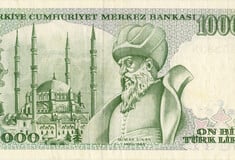
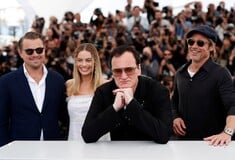
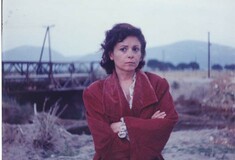



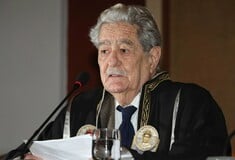
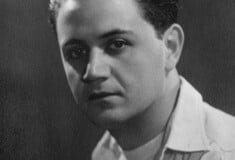




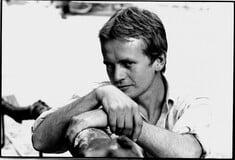




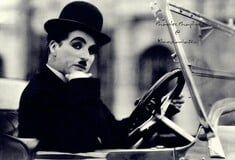
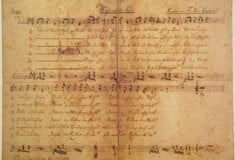
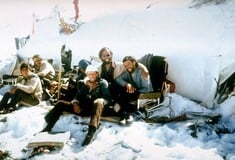
σχόλια